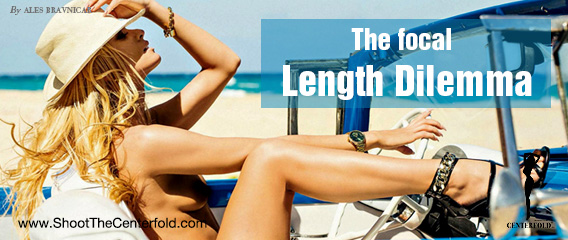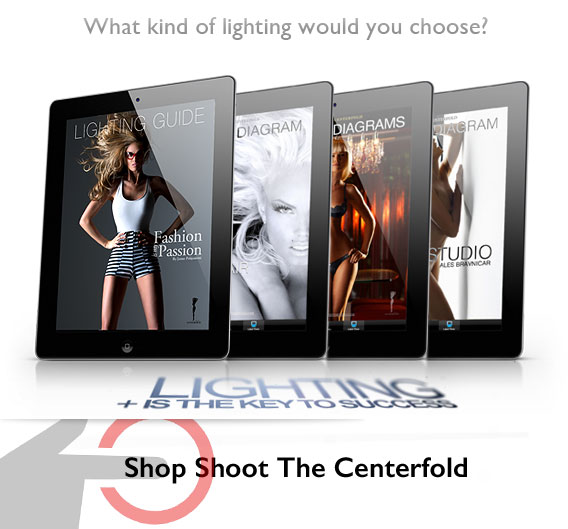Which Lens is the Best to Use When Shooting a Pictorial?
We often get inquiries about lenses, particularly “Which one is the best for photography?” Unfortunately, there is no easy answer since it’s like asking someone, “Which part of your wardrobe is the best during winter, summer and at the beach?” Well, they all are, because each has a different purpose. Lenses are no different.
The focal Length Dilemma
There are zoom lenses that offer you a variety of focal lengths but they often fall short in quality and perspective when compared to fixed focal length lenses. The visual appetite in the editorial and commercial industries where pictorials speak for themselves is what you should feed with rich variety, vision and focal lengths of lenses.
Here’s a quick comparison of how a successful pictorial flow should have, if we were to compare one to a song.
- Intro
- Verse
- Chorus
- Verse
- Bridge
- Chorus
- Verse
- Outro
Not all pictorials are the same and don’t need to show as much variety as some others. But, from my own experience working with editors for the past 30-plus years, I have come to realize what puts a smile on clients’ and editors’ faces. Put yourself in the shoes of an editor who gets endless pictorial submissions to the point of it being mind-numbing. Most of the pictorials look the same in their eyes: the girl in the same focal length and 90% of the time she’s looking at the camera with the same expression.
This can be a turnoff and very boring for an editor who consistently receives pictorial submissions as they were from a cookie-cutter. If the editor believes that the model has potential, but your image flow/photography does not jive with the editors’ taste buds, then he will have somebody else shoot the girl instead. This happens all the time and if you wonder why editors don’t get back to you, it’s simply because of the shortfalls of your submission. Trust me, when you have submitted a smoking pictorial, you hear back from the editors the very same day they review your submission.
So, what can you do to increase your chances of impressing the editors?
The most crucial element of your shoot is that you should evaluate your model choice and not just settle for what’s available. For me, the model is the most important part of the shoot. Models that have been seen over and over again do not work as well as the new faces and discoveries. (Not counting supermodels.)
Your pictorial variety can be produced in several ways, as listed below:
- Location
- Model form and posing
- Wardrobe
- Hair & Makeup
- Lighting (Very important)
- The visual perspective; the pictorial’s flow
- Lenses
You may wonder why I have left the camera out of the list. Well, the camera contributes very little to the topic and does not do anything more than capture the images of your choice. It’s great to have a good camera, but a camera does not offer much in the way of variety or anything else unless there is someone using it that has a clear vision to press the shutter.
Lenses are more important for your pictorial flow when combined with your vision as you saw above when comparing to the structure of a song. The opening image in a layout that offers good negative space for graphical elements will get editors asking for more. This introduces the pictorial and it’s the most important image since the first impression is what gets the viewers’ attention. (Cover image not included.) I am sure you have seen a magazine and one of the images just pops out and captures your attention. You scroll the pages to see more and wonder how come the rest of the images including the introduction image are so weak when compared to the one that you liked.
I remember a Playboy editor once telling me, “You make sure to do a good job because I will publish them regardless, with your name on them.” So, the pressure was on! Another famous line from that editor was, “Restore my smile on my face.”This usually happens because the pictorial simply did not offer enough strong images and the editor had to do his best to get at least a few pages worth of images that would work.
Other times you shoot a beautiful pictorial and all that gets published in the magazine is a single image that’s cropped (hacked) to death. You wonder if the picture sequence wasn’t strong after all. Sometimes, last moment things happen and alterations are forced even against the editors wishes.
For your next shoot, assemble a few different lenses and a good plan. Execute variety by photographing the same scene with a variety of focal lengths and different lenses. This will allow the editors to choose and design your pictorial after approval of your submission. It will also speak for you as a photographer who understands what the industry and editors want.
The images below are a great example of a good pictorial flow shot in Cuba Havana, by Ales Bravnicar. Model: Nadiya Bychkova, WDSF European and World 10-dance Champion.
1. Introduction and opening image for the pictorial. (Tall-wide shot.)
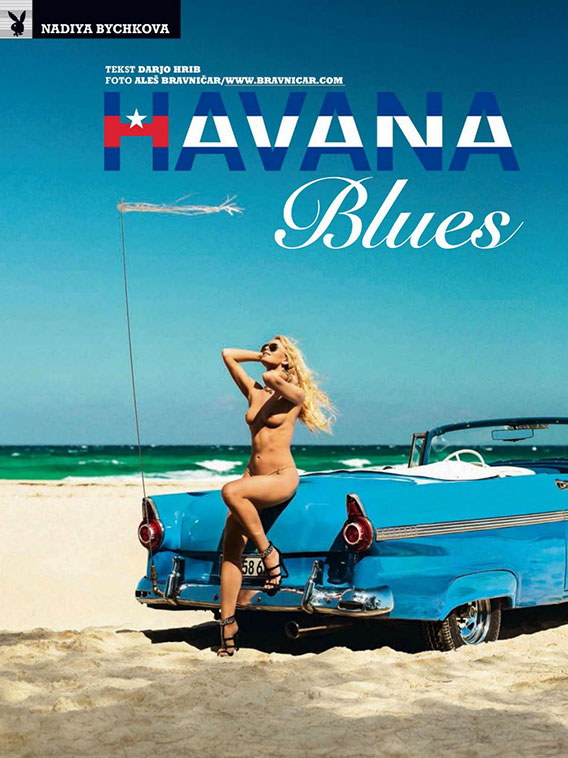
2. Establishing shot, Havana in the background. (Medium shot.)
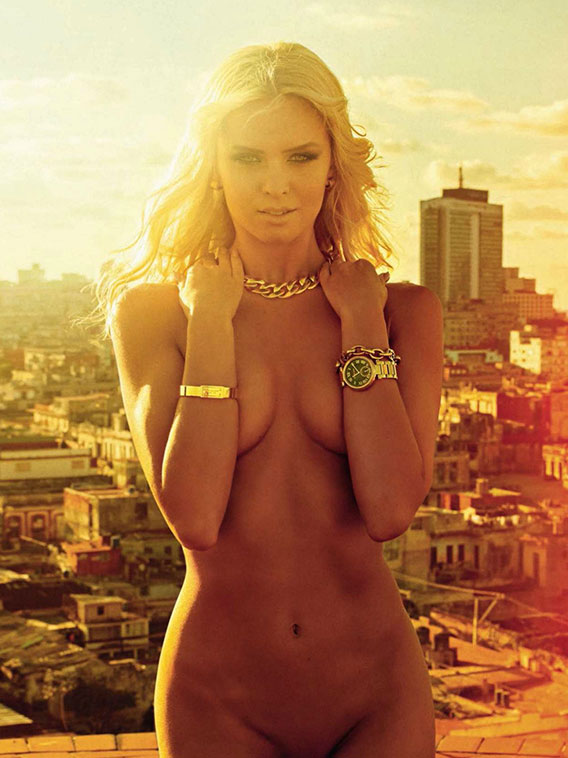
3. Establishing shot 2. Famous Cuban green lobby. (Tall-wide shot.)
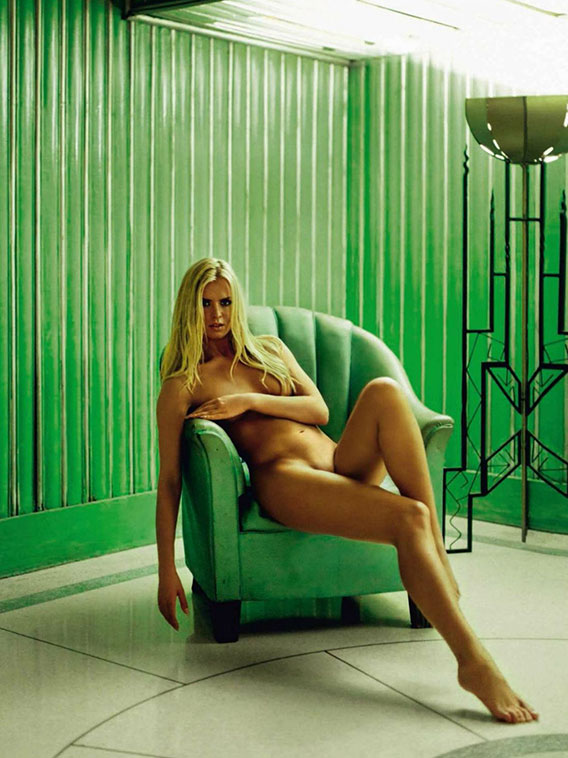
4. Mood-setting shot. Arriving to the beach with a classic car. (Medium-closeup shot.)
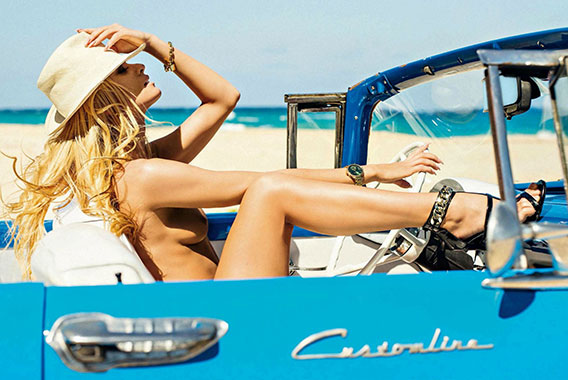
5. Beach activity shot. (Wide shot.)
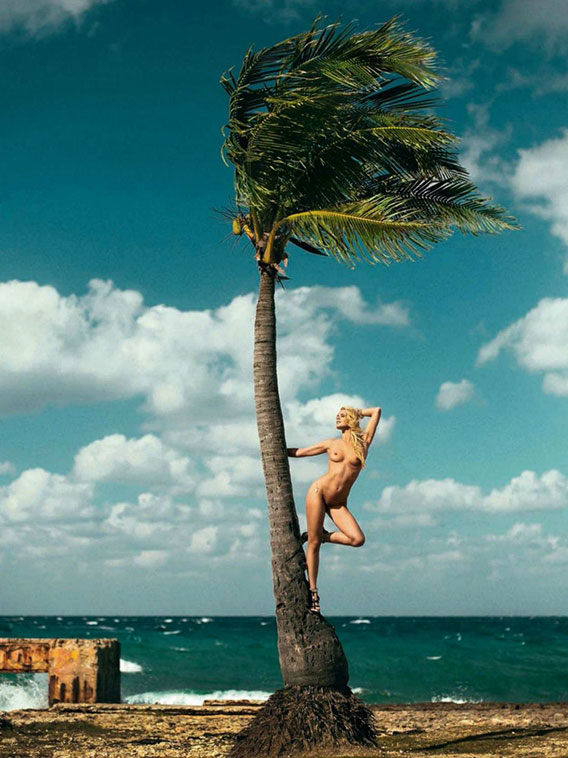
6. Late afternoon mood shot. (Tall-wide shot.)
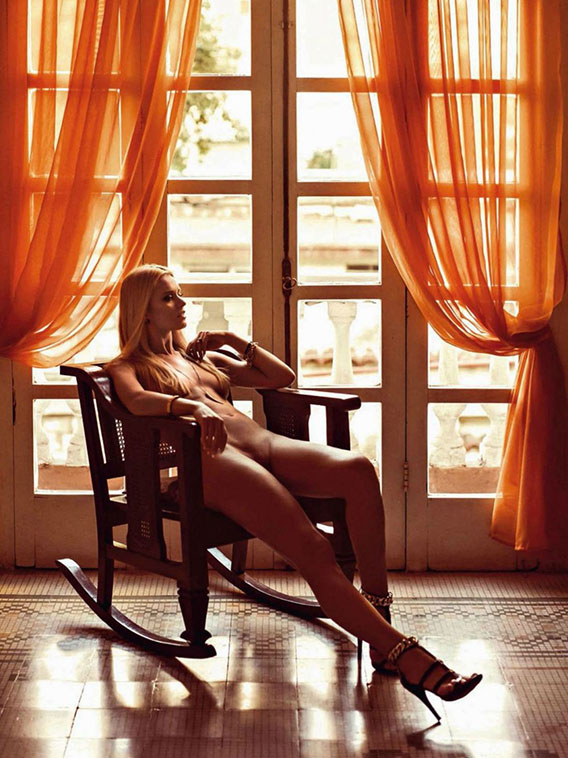
7. Inviting sensuality shot in the hotel room. (Medium-closeup shot.)
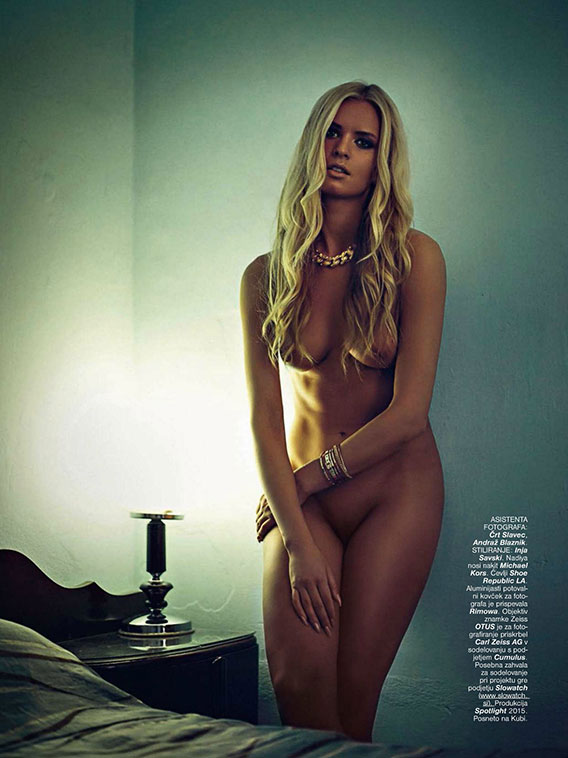
8. Famous Cuban staircase. (Wide shot – The money shot.)
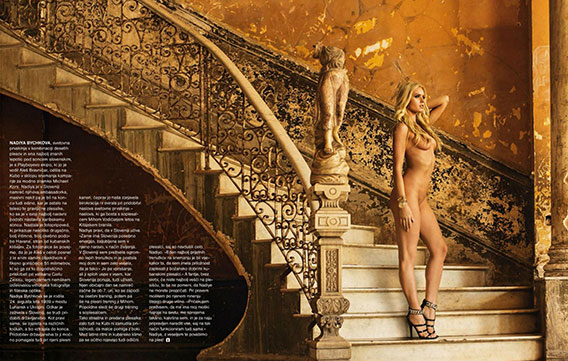
9. Sensual fantasy shot with natural mood lighting. (Medium-closeup shot.)
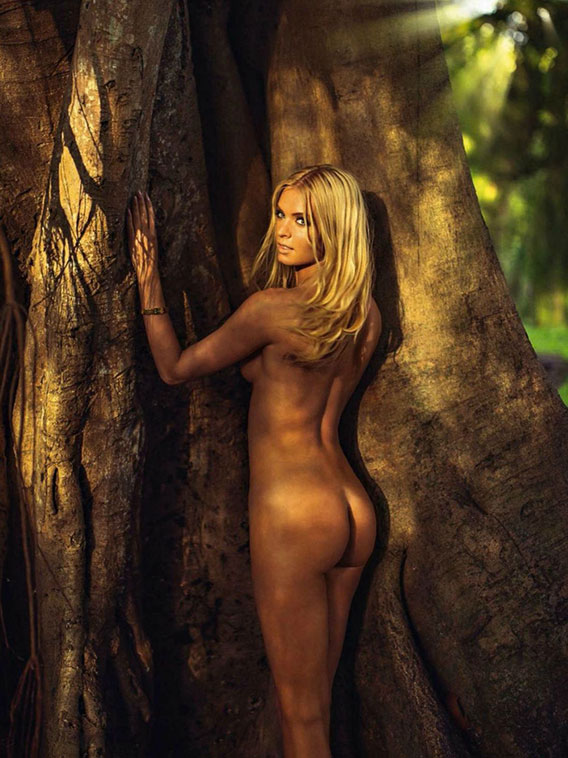
10. Parting shot, model driving away. (Closeup shot.)

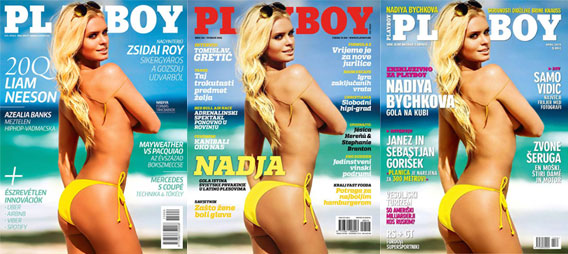 All images used with permission | ©Ales Bravnicar
All images used with permission | ©Ales Bravnicar
Hopefully this pictorial-flow demonstration gives you an inspiration to experiment your own pictorial scenarios and how to add production value to your future image sequences. Happy shooting.
~Jarmo Pohjaniemi
© 2015 Copyright ShootTheCenterfold.com. All rights reserved.





